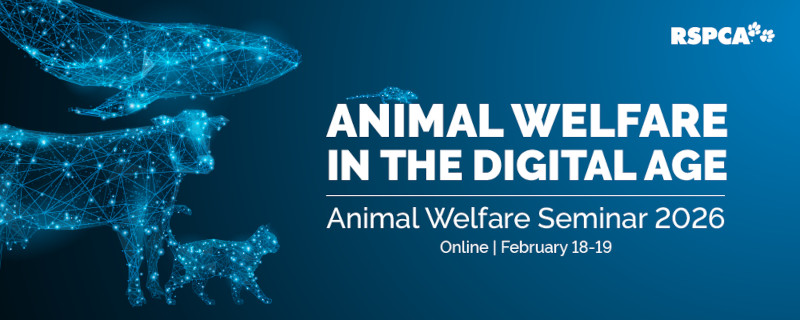The National Wool Declaration (NWD) is a voluntary declaration made by Australian wool growers about the mulesing status of the sheep who produced the wool they are selling at auction. The NWD allows wool buyers to distinguish between mulesed and non-mulesed wool, and also allows the Australian wool industry to track trends in mulesing over time.
What is the National Wool Declaration?
In 2008, the Australian Wool Exchange introduced the National Wool Declaration (NWD). This declaration allows wool growers to voluntarily communicate the mulesing status of their sheep to wool buyers at auction [1]. Approximately 85% of Australia’s wool is sold at auction [2]. Wool growers are asked to declare, per mob (group) basis, whether wool from that mob is from sheep who have not been mulesed (NM), whether some or all sheep have been mulesed (M), or whether all sheep were mulesed using pain relief (previously PR, now AA). If sheep are no longer mulesed on the property (and haven’t been for the last 12 months), then the grower declares ‘ceased mulesing’ (CM). In 2021, a new category was added allowing wool growers to declare the use of liquid nitrogen as an alternative to mulesing. Producers who choose to use the NWD benefit from a premium per kilogram of wool sold at auction. Declaring mulesing status allows wool growers to signal their animal welfare credentials to wool buyers – in particular those who are interested in buying wool from unmulesed sheep.
Mulesing is a painful procedure that involves cutting crescent-shaped flaps of skin from around a lamb’s breech and tail using sharp shears. The resulting wound, when healed, creates an area of bare, stretched scar tissue. Because the scarred skin has no folds or wrinkles to hold moisture and faeces, it is less likely to attract blowflies. This makes mulesed sheep less susceptible to flystrike (maggot attack) in the breech area. Mulesing is unnecessary if sheep are bred to be flystrike resistant and are appropriately managed.
What does the NWD tell us about mulesing practice?
The national percentage of bales with mulesing status declared was 76% as at June 2025 [3]. The percentage declared ‘non mulesed’ and ‘ceased mulesed’ was 23% and 3% respectively and the percentage of bales declared that pain relief was used was 44% [2]. Even assuming that the remainder of bales, i.e. those without NWDs, had similar mulesing status declarations, considerably more work needs to be done towards achieving a phase out of mulesing and, in the interim, 100% uptake of pain relief.
Growing interest in mulesing status from wool buyers has seen premiums paid for non-mulesed wool and commitments from brands to source only non-mulesed wool. Clearly and encouragingly, the market preference is for wool from sheep who are not (or no longer) mulesed. Interest is also rising in the declaration status of all wool (not just fine wool) as well as non-Merino wool, evidenced by discounts routinely being applied to bales that have not been declared [4].
Because the National Wool Declaration is voluntary, it is difficult to accurately track progress towards an end to mulesing and, in the interim, the extent to which mulesing is carried out with pain relief.
A 2020 review of the NWD saw the PR (pain relief) category changed to AA (pre- and/or post-analgesic/anaesthetic). There is currently no pre-anaesthetic available for mulesing, meaning that lambs feel intense pain during the procedure. There is a topical anaesthetic spray which can be applied after mulesing has taken place, however there is nothing that numbs the pain of the procedure itself. In addition, where pain relief is administered as a once-off dose, it will only reduce pain for part of the painful post-mulesing period, as it will wear off while pain is still present. The AA category thus risks misleading wool buyers into thinking they are purchasing wool from lambs that have felt little to no pain during and after mulesing. Nothing could be further from the truth.
How does ‘sheep freeze branding’ fit within the National Wool Declaration?
The previous NWD definition of mulesing limited the procedure to the use of shears. This effectively meant that where other painful procedures to change the breech area (including sheep freeze branding) were used, the sheep could be categorised as not mulesed (NM).
The 2021 review of the NWD finally recognised that alternative ‘mulesing’ methods should not be lumped into the same category as ‘non mulesed’ wool but instead should have their own category. Wool growers using liquid nitrogen (i.e. sheep freeze branding) must now declare this on the NWD as ‘LN’. This added transparency means that wool buyers seeking wool from sheep who have not been subjected to mulesing or sheep freeze branding are able to make more informed choices. However, there is currently no option to declare whether pain relief has been used in addition to liquid nitrogen, which means full transparency is still lacking when it comes to the painful liquid nitrogen alternative to mulesing.
What is the RSPCA’s position?
The RSPCA believes that declaring mulesing status on the NWD must be mandatory. This would allow the wool industry to demonstrate their commitment to improving animal welfare, enable customers to make an informed choice, and provide the necessary transparency to be able to monitor progress towards a long-awaited phase-out of mulesing.
References
[1] Australian Wool Exchange – AWEX (2025) National Wool Declaration Frequently Asked Questions. April 2025.
[2] Australian Wool Exchange – AWEX (n.d) Auction.
[3] Australian Wool Exchange – AWEX (2025) National Wool Declaration Test Data – Auction Data. June 4 2025.
[4] Australian Wool Innovation – AWI (2025) Use the NWD to attract the highest price. Beyond the Bale 102.

